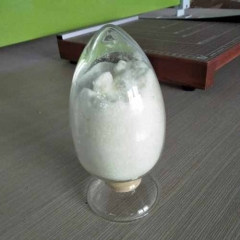

TNJ Product Finder
TNJ can provide variety of chemicals which can be applied into industrial, food, pharmaceutical and cosmetic fields. Here you can search what you are looking for by Chemical name, CAS number and other names. You can also find the chemicals by application fields listed on the left of this page.
If you can\'t find it please Contact Us>>
Search Results

2,4-Dichloro-3,5-dinitrobenzotrifluoride CAS 29091-09-6
Properties of 2,4-Dichloro-3,5-dinitrobenzotrifluoride CAS 29091-09-6 Chemical name: - Molecular Formula: C7HCl2F3N2O4 Molecular Weight: 305.00 used as an intermediate in pesticide, medicine and organic synthesis . EINECS: 249-420-8 Density: 1.788 Melting point: 76-78 ºC Boiling point: 314.7 °C at 760 mmHg Flash point: 144.1 °C

1,4-Dibromobutane CAS 110-52-1
Properties of 1,4-Dibromobutane CAS 110-52-1 Colorless or yellowish liquid. Melting point: - 16.53 ℃ (- 20 ℃), boiling point 197-198 ℃ (1.46kpa), 76 ℃ (1.47chemicalbookkpa), relative density 1.7890 (20 / 4 ℃), refractive index 1.5190 and flash point 54 ℃. Soluble in chloroform, alcohol and ether, insoluble in water.

2,4-Dimethylpyrrole CAS 625-82-1
2,4-Dimethylpyrrole CAS No. 625-82-1 is colorless or light yellow liquid and can be used as a pharmaceutical intermediate. Chemical name: 2,4-DimethylpyrroleCAS No. 625-82-1 Molecular Formula: C6H9N Molecuar Weight: 95.14 EINECS: 210-912-2

Methyl α-D-mannopyranoside CAS 617-04-9
Properties of CAS 617-04-9 Methyl alpha-D-Mannopyranoside can be used as an intermediate in chemical synthesis. It is a competitive inhibitor of the combination of mannose and Escherichia coli.

4-Chloro-1-butanol CAS 928-51-8
Properties of 4-Chloro-1-butanol CAS 928-51-8 Chemical Name:4-chloro-1-butanol Used as an intermediate in organic synthesis . Molecular weight: 176.21 Molecular Fomula:C4H9ClO Appearance: colorless liquid Assay: 97%min

2-Chloro-4-fluorotoluene CAS 452-73-3
Application of 2-Chloro-4-fluorotoluene CAS 452-73-3 can be synthesized into a variety of pesticide intermediates through photochlorination, nitration, bromination, alkylation and reduction. In recent years, with the rapid development of pesticide, medicine, dye and other industries.